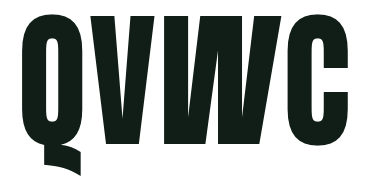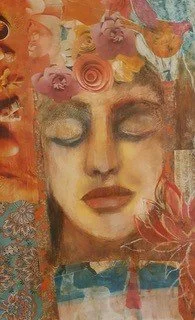Ann Soo Lawrence is an artist who shares her journey of diagnosis and recovery from early breast cancer
Ann is a 62-year-old artist from Brunswick, Melbourne. She lives with her partner, Graham, and their greyhound, Candy. Ann is mother to Emma and Matt and grandmother to baby Julian. Ann’s family migrated to Australia in 1971 from Malaysia; she is from a Chinese background.
Throughout Ann’s career, she’s worked as a social worker, team leader, teacher/trainer, arts therapist, group facilitator, university tutor and field educator.
Currently, Ann is in private practice as a social work consultant and creative arts therapist. She loves continuing to explore working in different settings with diverse people. She embraces a growth mindset and works towards empowering women to tell their stories in creative ways.
Stories Shared reflects her experiences with asylum seekers and refugee women, as well as her journey of diagnosis and recovery from early breast cancer. She’s used portraiture to capture the strength, courage, hope, and resilience of these women.
Daily dancing, exercise, knitting and drawing form part of her creative expression and meditation.
Tell us a bit about your artwork. When did you start, how does it make you feel and why is it important to you?
My artwork is the result of a daily drawing and dance movement practice. It is my path to processing emotions, thoughts and the musings of life. It is like a mindfulness activity; time saturated by being in the moment. My artwork is always changing.
Currently, I love drawing portraits and using charcoal. It is such a direct medium, and the textures range from ghostly soft to ruggedly gritty. Charcoal can be layered and moves so freely and doesn’t stagnate.
There is a sense of play and experimentation when using charcoal. I think it is a good match for portrait work as faces are also expressive, elastic and mobile.
This exhibition - Stories Shared - is a body of work selected from drawings and paintings created over three months in 2023. They are individual voices, yet they are also like a collective voice. Each portrait is inspired by a woman’s story from my experience of working in the refugee and asylum seeker space and my recent experience of breast cancer diagnosis and recovery.
Do you think your experience as a social worker and creative arts therapist has inspired your art? If so, tell us a bit about that?
Very much so. My work in both those roles offered opportunities to hold space and listen deeply to diverse women’s stories that were personal, profound, wise and life changing.
I was inspired and uplifted by women's stories of growth and transformation.
I wanted to visually capture the impact it had on me, using portraits to highlight the stories as both unique, universal and ever evolving.
Why is art therapy so important?
I believe creativity is a force of nature. Creativity is like an inner resource for us to draw upon for comfort, wisdom, well-being and resilience. For me, art is integral to life and not only for the selective few. Art therapy can be the avenue for us to express and explore our joys, triumphs, vulnerabilities, challenges and what is emergent in our lives. Art taps into imagination, hope and possibility.
It helps us connect to ourselves and we can make ourselves ‘seen and visible’ through our art. The artmaking process can also be relaxing, relieving and transformative. We can be soothed and calmed from using the materials and foster mindfulness in the process.
Art therapy is healing and through my recent experience of breast cancer, art became my medicine during a very challenging time.
How has working with asylum seekers and refugees informed your work?
I had the privilege of working with asylum seekers and refugees by facilitating an art-based story telling group at Foundation House (Victoria’s Foundation for the Survivors of Torture and Trauma) for three years. I learned about how people lived with on-going resilience in the face of adversity. I also discovered that art making was the most powerful language for stories to be expressed. It is sensory based and was the glue to group dialogue and a lot of fun as well.
Where participants could not find the words, mark making, collage and creating a vision board engaged them in building their story through the felt sense. These creations became a springboard for each participant to tell the story with their hands and then, with their voices. Art is a very powerful medium.
October is breast cancer awareness month; can you tell us a little bit about your journey and healing?
I was diagnosed with early breast cancer in late June 2023. Being an active grandma and reasonably fit person, it came as a terrible shock. I was rocked to the core. I had noticed some changes to my left breast, so my GP sent me for a mammogram and an ultrasound that revealed a highly suspicious lump.
I was referred immediately to a wonderful breast surgeon who ordered a biopsy to confirm a diagnosis of breast cancer. With the love and support of my family, I was able to step up to the challenges one day at a time.
To have the diagnosis confirmed was very hard; however, the clarity and sensitivity of the surgeon reassured me that there is a clear pathway for treatment and that I did not have to do it alone.
I have always been very independent, however, I intentionally opened myself to being helped and allowed vulnerability to show up and be expressed.
In July, I had surgery for the lump to be removed and was relieved to hear that the cancer was contained and not spread to other parts of my body. This brought a lot of emotion and tears of relief that the cancer had been detected early and hence, very treatable.
I have just finished three weeks of daily radiotherapy to my left breast and once again, I was held and supported by kind and thoughtful radiation therapists. I am full of gratitude for the care I have received and the human connection that is the lifeline that one holds on to during such a journey.
I will now move to the next phase of my healing i.e., taking hormone blocking medication to reduce the risk of recurrence to below 1%. Trusting the oncology team and medical advancements has been very important. Finding gratitude daily and healing through my art and mounting this body of work for exhibition has been a godsend.
My exhibition coincides with Breast Cancer Awareness month and I wish to encourage women to take advantage of the excellent services we have available as early detection does save lives.
What advice would you have for those at the start of their breast cancer journey?
At the start of the breast cancer journey it is challenging to even think that one is about to start a ‘journey’. Coming to the reality of a diagnosis takes a lot of time and patience to accept. It is important not to rush yourself. Practicing self -compassion and an attitude of receiving from others helped me during a difficult and daunting period.
I gave myself the kindness that I would offer someone else and therefore, I factored in the pleasant things of life such as making art, exercising, eating healthy foods, having creative pursuits and enjoying moments like going out for a special meal or a walk in nature.
It is important to plan for moments of gratitude and joy even when one’s world is turned upside down. It was a reminder to implement self-care, especially soothing my nervous system and grounding myself.
I also found that receiving information and support from the medical team was very important rather than using Dr Google! I was advised by my surgeon to contact BCNA and Cancer Council for information and this gave me the up to date and most helpful information regarding the diagnosis and treatment pathway. The support network and hotlines are there to support us every day. Finally, taking one step at a time was my mantra and being in the moment rather than rushing ahead.
How can art help those experiencing trauma?
Art is part of a more holistic approach towards trauma healing and recovery. We know through recent research that trauma affects the mind, body and spirit of a person.
Art making is a sensory and body-based experience, and it can have a very positive impact on regulating the body’s response to stress.
As making art involves movement and activates the senses of touch, sight, smell and sound, this can be utilised to soothe the embodied stress experienced by trauma survivors from the ground up.
Art can also support trauma survivors and express the narratives of their experiences in a safe and contained way when assisted by an art therapist individually or in a group.
Creating art is also a way to rewrite one’s own story in imaginative and hopeful ways that is unique to themselves. By using a range of materials, trauma survivors can have a greater sense of control and mastery and be empowered through the process.




